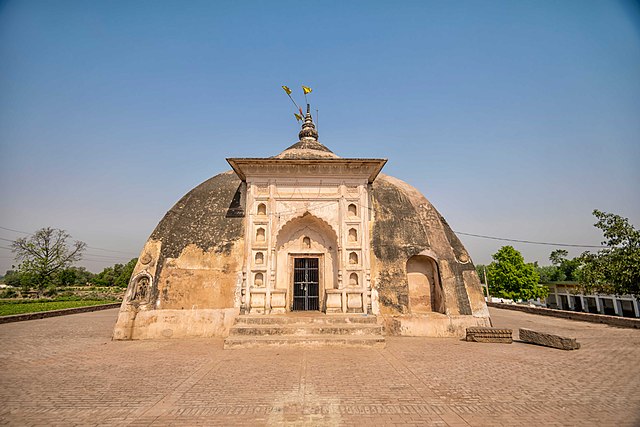Monsoon Raagas – 5 : The Monsoon Temple of Kanpur
The series, Monsoon Raagas, clearly explains the fact that rains are not integral part of our lives, it is part of our cultural aspect. Everyone, be it Hindu, Christian or a Muslim, has their very own way of expressing the joy of rains to their Gods. Moreover all these religions in the sub continent also have yet another aspect – that is to invite rain. Through their prayers and ritual people invite good rainfall for happy lives. But this time we get into Kanpur to a temple that actually helps in predicting the rainfall!

The Jagannath temple at Bittorgarh near Kanpur is popularly known as the monsoon temple. This temple has an exclusivity of its own. This is probably only temple in the country that predicts the rainfall. Looking at the water droplets that fall on the roof of the temple, a good or bad rainfall for the season is predicted.
If the size of water droplets is big, it is believed that there will be good rainfall and if it small, then drought may occur. A large number of devotees pull the chariot of Lord jagannath and offer prayers in the month of July every year. A fair is also held during Janmastami. More than 20,000 people from different villages join in the procession. These idols made of black stone, are placed on the chariot as it travels through the villages before they are placed back in the temple.
Legend behind the temple
Built in the 11th Century during the Chandela period, the “Jagannath Temple’ is made entirely of stone. The intricately carved pillars and stone structures in the temple belong to that era as well. These pillars that surround the idols of Lord Jagannath, Baldao and Subhadra support a framework on top of which rests a decorative stone slab piled with more stone slabs. These form the ceiling. This slab is what makes the temple unique. About a fortnight before the monsoons arrive, the water starts trickling from the ceiling indicating that the monsoon showers are around the corner. This gives the villagers, enough time to make arrangements for sowing crops and repair works in their houses.

Depending on the number of water droplets that fall, signals whether the farmers will receive a heavy or a light monsoon. No water droplets on the ceiling in a particular year indicate drought. This prediction has been true for centuries and is relevant for a radius of 50 kilometers. What is even more fascinating is that 12 hours before the monsoon, the stone dries up and there are no trickles once the monsoons arrive. Media, researchers, and scientists have conducted investigations but have found no answers to this strange phenomenon.
Temple architecture
The architecture of the temple is very unusual. It is mound-like with two domes on top (Mughal style domes). A wheel can be seen atop on the latter dome. It is said the shape of the temple symbolizes the chariot that was taken by Krishna and Arjun in the battlefield of Kurukshetra. A petal-like design on the walls depicts the lotus which is a symbol of divine beauty and purity.

Lord Jagannath is a form of Lord Vishnu (one among the Hindu Trinity) and is often called the “Lotus-eyed One”(Rajiva netra). Apart of the decorative ceiling slab now lies in the courtyard along with pillar remains and stone carvings.
Presently the temple is under the state archaeological department. But no efforts are being taken by the department to preserve the heritage and religious temple that is very unique and special to Kanpur. For years, the temple was managed by a priest and his family continue to live in its courtyard. After it was handed over to archaeological department, burning incense sticks, performing aarti and feeding the idols have been banned. But people continue to their ritualistic practices despite restrictions thus spoiling the structure and hammering the preservation of the monument.


